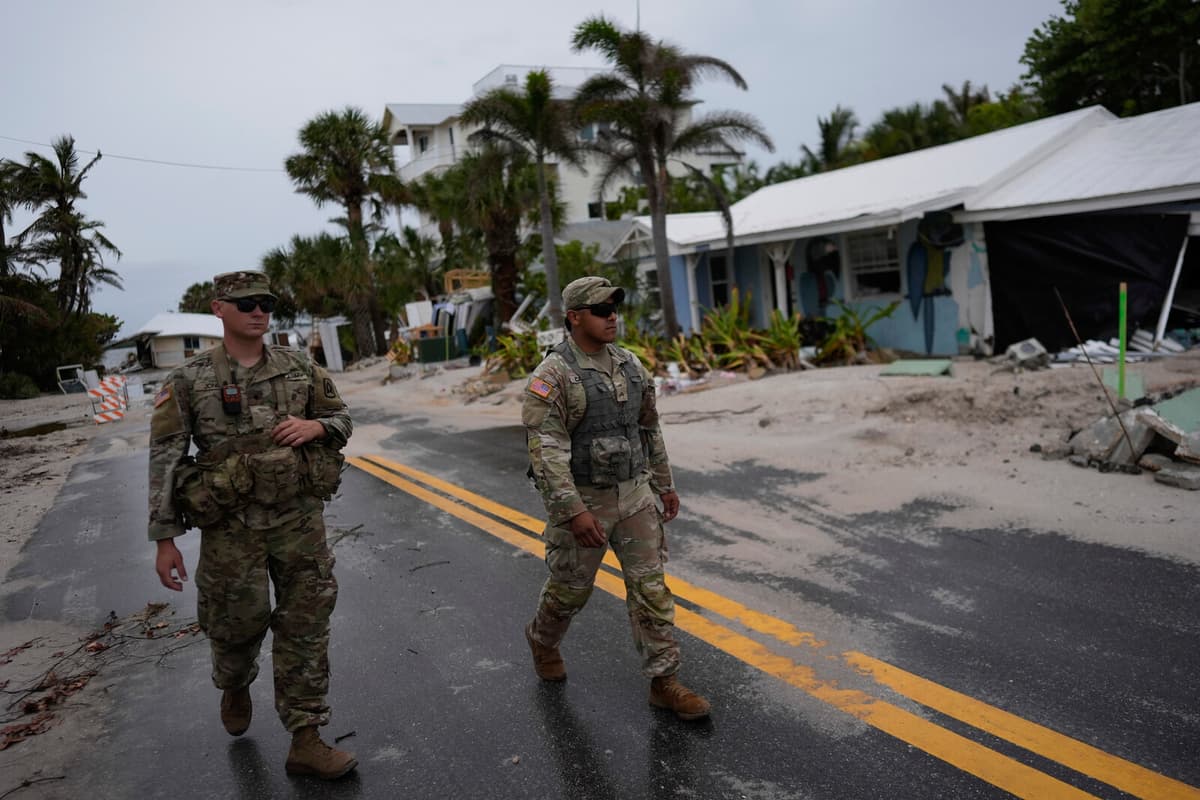In Sanibel, a community on a sandbank island off the coast cities of Fort Myers and Cape Coral in western Florida, residents filled thousands of sandbags on Tuesday to set up some form of protection for their homes and other buildings.
By 10 pm, everyone was forced to leave. Then, it became forbidden to stay on the island – people who stay risk being arrested, the authorities have warned.
The hurricane is expected to reach Florida's west coast late on Wednesday evening, local time.
It's not the time to play hero. It's not the time to try to stand against the floodwaters that are coming, said Mayor Richard Johnson before the large-scale evacuation, reports local newspaper News-Press.
"Very, very powerful"
Almost two weeks ago, Hurricane Helene caused enormous destruction and many deaths. Floodwaters caused record-high water levels in several areas. As Hurricane Milton approaches, storm surges are expected to reach up to three and a half meters high, sweeping into areas that were not among the worst affected last time.
Evacuation orders have been issued for most communities along the state's west coast and its many long sandbank islands. In those areas, around 5.9 million residents live, according to news agency AP, citing official statistics on the number of registered residents. Rescue services have warned that no one can count on being rescued once the storm has arrived.
You should evacuate now, now, now. You should have evacuated already. It's a matter of life and death, and it's no exaggeration, warned President Joe Biden at a press conference at the White House on Tuesday.
Worst in a century
Milton has had wind speeds of over 80 meters per second at times. On Tuesday, it was upgraded again to category five on the five-grade hurricane scale.
Further north along the coast, long traffic jams formed northward. In particularly storm-hit Saint Petersburg, bulldozers have tried to clear as much debris as possible from the streets so that it doesn't blow around and cause even greater damage.
If the forecasts hold and Milton continues in its predicted direction, the metropolitan area around Tampa Bay will be hit by the worst storm in over 100 years.
In the best-case scenario, the hurricane will move eastward towards the Atlantic without passing through more affected states.
Hurricane Helene made landfall in southeastern USA on September 26. It caused destruction and flooding in Florida, North Carolina, South Carolina, Georgia, and Tennessee. In many communities, streets were completely flooded, highways were washed away, and bridges collapsed. In some areas, buildings and containers were swept away in flooded rivers.
At least 232 people died in a total of six states – most in North Carolina – and many are still missing, making Helene the second-deadliest storm to hit the American mainland in the last 50 years, after Hurricane Katrina in 2005.
In many areas of the affected states, people had not expected the storm to reach so far inland and cause such extensive damage, especially in higher-lying areas near the Appalachian Mountains.
Analysis firms have estimated that many affected households lacked the right insurance for this and that the hurricane has caused uninsured damages equivalent to hundreds of billions of kronor.





